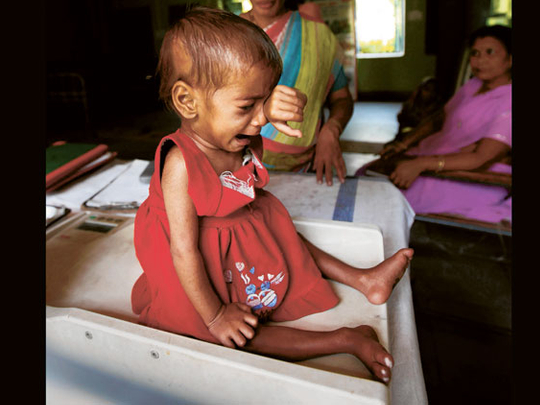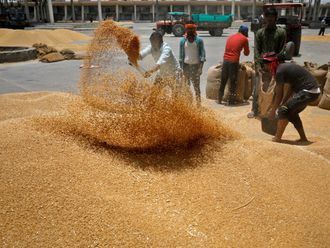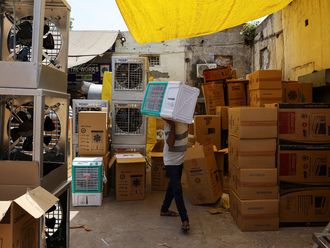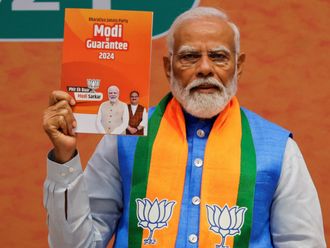
Every year, in the state of Madhya Pradesh, central India, more than 30,000 children die before their first birthday. These unfortunate infants are malnourished from birth. Poverty, backwardness and illiteracy are the factors responsible for the situation.
The infant mortality rate (IMR) in the state is 70 per 1,000, the highest in the country. Malnutrition here is much higher than the national average and the state has the highest percentage of undernourished children in the country. Former health minister Anup Mishra admitted in the state assembly that a total of 29,274 children died of malnutrition in 2008-09 alone.
According to the data available with the National Family Health Survey, the percentage of malnutrition has risen from 54 to 60 in the state. At least 12.6 per cent of children are severely malnourished, against the national average of 6.4 per cent. About 1,355,000 children up to the age of 5 are severely malnourished, and a total of 81,622 children have died in the last 34 months, the highest in the country.
According to a Supreme Court report, the number of children in the state in the age group 0-6 is about 11 million.
In the last assembly polls, malnutrition was an election issue. In their election manifestos, both prominent political parties, the Congress and Bharatiya Janata Party (BJP) had promised to make the state free of malnutrition. However, the problem has assumed alarming proportions despite spending billions of rupees — thanks to an ineffective administrative system, corruption and the insensitive attitude of the authorities towards the people.
The Woman and Child Development Department of the state government launched a campaign to identify malnourished children in the state on the basis of the standards set by the World Health Organisation (WHO). The level of malnutrition was ascertained after weighing the children between the ages of 6 months and 6 years. Of 5.7 million children weighed under the scheme, according to government sources, 3.6 million children were found to be of normal weight, 1.8 million were underweight and 282,000 children severely malnourished.
The official report stated that the malnutrition was most alarming in tribal-dominated districts such as Jhabua, Alirajpur, Dhar, Mandla, Sidhi and Anuppur, where the percentage of malnourished children was found to be between 7 and 15.
Child Rights and You (CRY), which conducted a survey in ten districts of Madhya Pradesh, has claimed that more than 60 per cent of the state's children are malnourished. However, Woman and Child Development Minister Ranjana Baghel said, "A total of 6.9 million children were examined in 2010-11. More than 4.6 million children were found to be normal and 2.3 million malnourished." And 137,000 children were severely malnourished, suffering from malnutrition of the third or fourth level.
The minister also said, "A total of Rs5,116 million [Dh349 million] was spent on supplementary nutritious food to check malnutrition among children."
More shocking figures from CRY are that 74 per cent of the tribal children are undernourished and 49 per cent of children living in resettlement colonies of the capital, Bhopal, are malnourished. Vikas Samwad's Prashant Dubey, who conducted the survey on behalf of the organisation, said, "In Rewa district alone 83 per cent of the children were found to be malnourished. In Bhopal's 11 resettlement colonies, around 49 per cent of the children were undernourished. Out of them, 20 per cent of the children were severely malnourished."
More girls have been found to be malnourished than boys. They are more at risk of malnutrition because of their lower social status and discrimination in diet.
Sachin Jain, of the Right to Food campaign, said, "Madhya Pradesh Chief Minister Shivraj Singh Chouhan might claim to be the maternal uncle of all the children of the state, but he has not been able to address the present malnutrition crisis. He has even failed to ensure setting up of required numbers of anganwadis [government-sponsored child-care and mother-care centres] needed to tackle the problem of undernourishment among kids. Even today the number of anganwadis is short by 47 per cent."
Satna district leads the pack in the death of undernourished children. From 2005 to 2009, 1,603, 2,060, 1,688 and 1,856 children, respectively, died of malnutrition here.
The state government, in association with the central government, is running several programmes to eradicate malnutrition. During the last four years, the state government has spent about Rs2 on the safety and about Rs15 on the health of each child. However, the needy don't benefit from the schemes because mafias control them. Aware of the problem, Chief Minister Chouhan instructed the authorities that a single organisation be allowed to supply nutritious food to a maximum of 15-20 anganwadis. The minister and principal secretary of the Woman and Child Development Department endorsed the directive. However, the order is yet to be implemented in the cities and the mafias continue to benefit at the cost of malnourished children and poor women.
While the Madhya Pradesh government spent Rs15 on the health of each child from 2004 to 2009, the Odisha government spent Rs17 and the Uttar Pradesh government spent Rs60. The annual expenditure on safety per child in the state was Rs1.94, while the figure was Rs27.54 in Andhra Pradesh. It is clear that the problem of malnourishment among children is not being tackled with the earnestness that it deserves.
Shuriah Niazi is a journalist based in central India.












